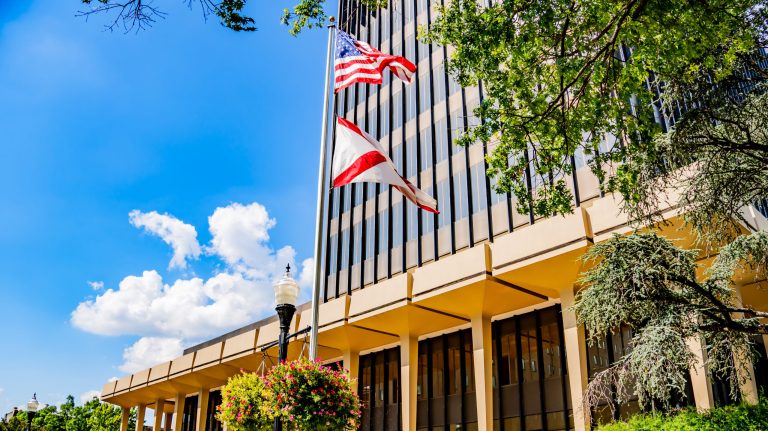Reviewed by: Elizabeth Hobbs
North Alabama research center becomes global lab for climate-resistant forests
Reading time: 3 minutes

“Alabama the beautiful” is more than just a motto—it’s a reflection of our commitment to maintaining the biodiversity in Alabama.
Our mountains have stories to tell, and these researchers intend to listen. Keep reading to learn about why this Alabama Research Center made national headlines for their conservation work.
Research at Paint Rock receives national recognition

“Inside Climate News”, an environment-based nonprofit, recently sat down with Bill Finch, a longtime conservationist and co-founder of Paint Rock Forest Research Center.
In his work observing and tracking the development of Paint Rock Valley, Finch believes he has discovered new species of plants such as:
- Violets
- Maples
- Elms
- Robinia
Paint Rock Forest Research Center is located in Cumberland Plateau (30 minutes east of Huntsville) at the southern tip of the Appalachian Mountains. Finch described the area as “one of the last great wild places in the eastern U.S.” due to the rich biodiversity that resides there. He believes the work done at the center will influence conservation methods for adapting to climate change around the globe.
Specifically, the center is involved in:
- Maintaining “a genetic reservoir for climate-resistant tree species”
- Hosting students + faculty from local universities
- Offering fellowship + scholarship opportunities
- Seed processing to propagate shortleaf pine
- Fun fact: this is funded by Jeff Bezos under a grant through the National Fish & Wildlife Foundation
- Mapping cave ecosystems
- Monitoring aquatic species
- Conducting surveys of the relationship between birds and insects
- Documenting wildflowers
One of their research methods: utilizing a 12-gauge shotgun (carefully aimed) at distinct branches.
- The fallout from this unique research method is preserved in liquid nitrogen for further study at the center.
Alabama’s biodiverse history
Our team recently learned about Alabama’s biodiversity on a hike up Ruffner Mountain—swipe to see the variation in our soil! (Nathan Watson / Bham Now)
Alabama’s biodiversity traces back to the ice age, where many species were able to survive and thrive in our climate. Over time, our limestone deposits and long growing season have bolstered the number of species that live here.
We have:
- more than 6,350 species (#4 most species across all states)
- the most diversity of freshwater mussels, freshwater fishes, freshwater snails, crayfish + freshwater turtles
- 40 native oak species (the Appalachian trail has 12 total)
- 80% of all hickory trees worldwide
- + so much more
Alabama is currently the 4th most biodiverse state in the U.S.—just behind Arizona and likely to surpass Arizona by the end of the decade as new species are discovered.
While our biodiversity has not always been the most explored compared to other states, Finch is working to change that.
North Alabama’s research impact for the U.S.
Finch believes that Alabama’s biodiversity is the key to repopulating and restoring degraded ecosystems in the United States. If the forest can be preserved, explored and properly tagged, then we can utilize it’s resources to boost biodiversity in the communities that need it most.
Want to stay in the know about what’s new and happening in and around Huntsville? Follow us on Facebook, TikTok and Instagram, and be sure to subscribe to our newsletter.





